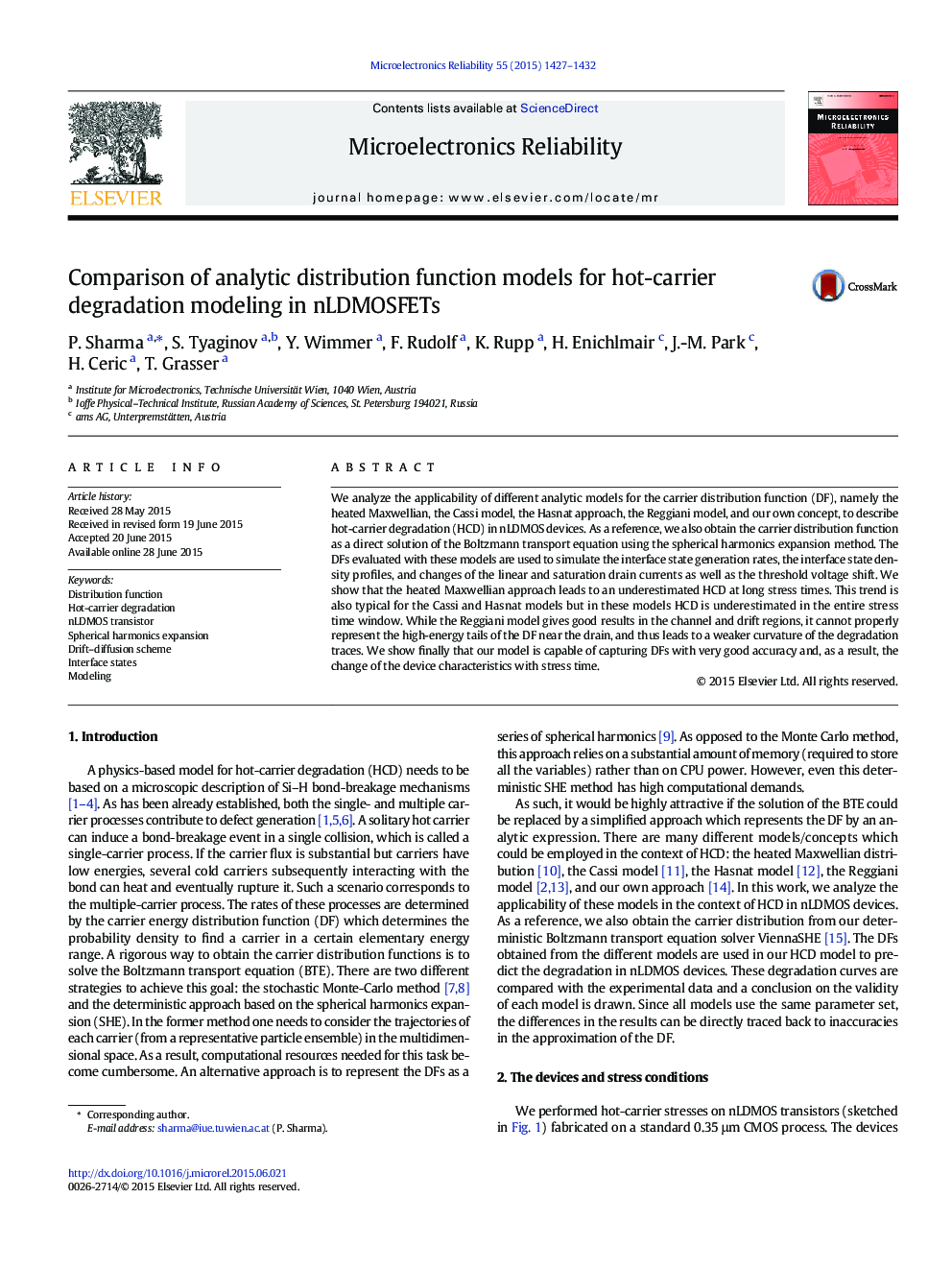| Article ID | Journal | Published Year | Pages | File Type |
|---|---|---|---|---|
| 6946563 | Microelectronics Reliability | 2015 | 6 Pages |
Abstract
We analyze the applicability of different analytic models for the carrier distribution function (DF), namely the heated Maxwellian, the Cassi model, the Hasnat approach, the Reggiani model, and our own concept, to describe hot-carrier degradation (HCD) in nLDMOS devices. As a reference, we also obtain the carrier distribution function as a direct solution of the Boltzmann transport equation using the spherical harmonics expansion method. The DFs evaluated with these models are used to simulate the interface state generation rates, the interface state density profiles, and changes of the linear and saturation drain currents as well as the threshold voltage shift. We show that the heated Maxwellian approach leads to an underestimated HCD at long stress times. This trend is also typical for the Cassi and Hasnat models but in these models HCD is underestimated in the entire stress time window. While the Reggiani model gives good results in the channel and drift regions, it cannot properly represent the high-energy tails of the DF near the drain, and thus leads to a weaker curvature of the degradation traces. We show finally that our model is capable of capturing DFs with very good accuracy and, as a result, the change of the device characteristics with stress time.
Keywords
Related Topics
Physical Sciences and Engineering
Computer Science
Hardware and Architecture
Authors
P. Sharma, S. Tyaginov, Y. Wimmer, F. Rudolf, K. Rupp, H. Enichlmair, J.-M. Park, H. Ceric, T. Grasser,
